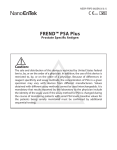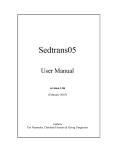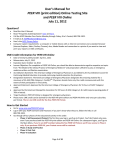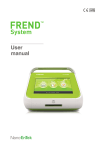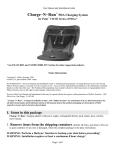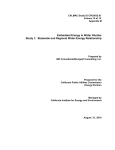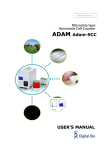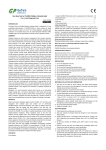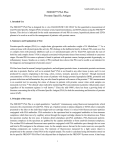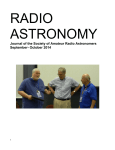Download FREND Cardiac Triple_Package insert(v.0.0)
Transcript
NESPI-FRCT-001EN(V.0.0) FREND™ Cardiac Triple Cardiac markers Intended use The FREND™ Cardiac Triple test is a fluorescent nanoparticle immunoassay designed for in vitro quantitative measurement of myoglobin, troponin I, and creatine kinase MB in human plasma samples using EDTA as the anticoagulant. The FREND™ Cardiac Triple microfluidic flow cartridge is designed for use in the FREND™ System to aid in the diagnosis and assessment of the severity of myocardial infarction. Summary A leading cause of morbidity and mortality in the industrialized world is acute myocardial infarction (AMI).1 Emergency healthcare professionals regularly face the challenge of (AMI) diagnosis in patients with chest pain. Physical examination, patient history, electrocardiogram, and changes in serum biomarkers are key criteria for AMI diagnosis.2 in addition, rapid testing of serum cardiac markers to aid in guiding therapy has been shown to improve outcomes of high risk patients.3 When physical examination and other AMI indicators (like electrocardiogram, ECG) are inconclusive, levels of serum biomarkers such as the MB isoenzyme of creatine kinase (CK-MB), Myoglobin, and troponin I (TnI) can aid in helping a physician diagnose AMI.4 CK-MB is an 82,000 dalton enzyme present in high concentrations in myocardial tissue.5 Elevated CK-MB serum concentration is commonly used indicate AMI because of correlation to cardiac damage.6 Twelve to 24 hours following AMI, CK-MB serum concentrations peak before returning to normal levels in approximately three days.7 Yet, because CK-MB elevation can result from events unrelated to cardiac muscle trauma, physicians rely on the concurrent measurement of additional cardiac biomarkers.8 Cardiac troponin I (TnI) is a 24,000 dalton muscle regulation protein that becomes released into the blood stream upon AMI.9, 10 Clinical data show elevation of cardiac TnI hours after AMI, bu peaks at 8~24 hours before returning to normal levels days later.11 Cardiac TnI has high tissue specificity for AMI as well as other myocardial injuries such as unstable angina, cardiac contusions, cardiac transplant, coronary artery bypass graft surgery, congestive heart failure, or other physical trauma to the heart.12 While a variety of cardiac biomarkers are available for measurement, cardiac TnI has become the preferred biomarker for myocardial injury. Myocardial infarction has come to be defined as the rise and fall of cardiac biomarkers, such as TnI, in conjunction with ECG analysis and abnormal physical changes.13 Myoglobin is a 17,800 dalton globular heme protein found in skeletal and cardiac muscle cells.14, 15 Upon AMI, myoglobin is quickly released into the bloodstream, rapidly increasing in the first 2~4 hours, peaking at 8~10 hours, and returning to normal levels in 24 hours.16 Elevation of myoglobin, while quickly response to myocardial injuries, also has been observed in skeletal muscle damage, skeletal muscle disorders, renal failure, and strenuous exercise.17 Thus, the measurable multiple cardiac biomarkers can detect AMI in a broader time range despite varying tissue spcificities.11 Principle of the assay The FREND™ Cardiac Triple test cartridge is a one-time-use rapid “sandwich” immunoassay utilizing fluorescent nanoparticles in microfluidic flow to capture and quantify myoglobin, TnI, and CK-MB in EDTA plasma specimens. A 35 μL drop of patient EDTA plasma sample is placed in the FREND™ Cardiac Triple cartridge, where the sample interacts with a proprietary mix of dry-loaded reagents. One of these reagents includes antibody-conjugated fluorescent nanoparticles, forming immune complexes with Myoglobin, TnI, and CK-MB in the patient sample. Capillary action moves the sample to the detection region, where capture antibodies grab the Myoglobin, TnI, or CK-MB nanoparticle complexes in detection zones. The fluorescence intensities of complexes are measured and Myoglobin, TnI, and CK-MB concentration is calculated by the FREND™ System. 2 Material provided Contents 25 30 01 01 Catalogue number FREND™ Cardiac Triple cartridge(s) Disposable pipette tip(s) FREND™ Cardiac Triple Code chip FREND™ Cardiac Triple Package Insert FRCT 025 One cartridge contains: Monoclonal mouse anti Myoglobin Polyclonal goat anti Troponin I Monoclonal mouse anti CK-MM 11.2 ± 1.1 ng 64 ± 6.4 ng 24 ± 2.4 ng Materials required but not provided The following materials are not provided with the cartridge but are required to perform cardiac marker measurement using the FREND™ Cardiac Triple on the FREND™ System. They are available separately from NanoEnTek. Materials Catalogue number FREND™ System Micro-pipette capable of delivering 35 μL F10 Warning and precautions For in vitro diagnostic use only FREND™ Cardiac Triple cartridges are single-use. Use FREND™ Pipette and compatible tips, do not mouth pipette. Handle specimens in accordance with the OSHA Standard on Bloodborne Pathogens.18 Wash hands thoroughly after handling specimens. 3 Wear protective gloves, clothing, and eyewear. Heterophilic Antibody Interference: Some individuals have antibodies to mouse protein (HAMA), goat protein (HAGA), or rabbit protein (HARA); interferences may occur in FREND™ Cardiac Triple.19, 20 Do not use FREND™ Cardiac Triple beyond indicated expiration date. Dispose of used FREND™ Cardiac Triple cartridges and pipette tips as bio-hazardous materials. Do not attempt to disassemble FREND™ Cardiac Triple cartridges: Micro-channels contain dry-loaded reagents that maybe bio-hazardous and/or toxic. Do not use FREND™ Cardiac Triple cartridge if pouch is damaged or seal is broken. Storage and Stability Store FREND™ Cardiac Triple cartridges at 2~8 ℃ (35~46℉). Do not remove the cartridge from sealed pouch until ready for use. When stored properly, cartridges are stable until the marked expiration date. Specimen collection and handling Human EDTA plasma sample (including EDTA plasma collected in separator tubes) are suitable for use with FREND™ Cardiac Triple cartridges. Samples collected as serum in collection tubes or plasma in anticoagulant tubes (such as citrate or heparin) have not been validated for use in FREND™ Cardiac Triple cartridges. Follow instructions detailed in this package insert as well as the specimen collection tube manufacturer’s instructions for specimen collection and preparation (including manufacturer’s instructions for centrifugation time and speed). Collect blood by venipuncture technique into an EDTA plasma collection tube. After allowing the specimen to sufficiently mix with anticoagulant at room temperature, the sample tube can be centrifuged for 10 minutes at 3,000 rpm. The plasma can be immediately used or stored at - 20℃ for 48 hours. Before performing a measurement on frozen sample using FREND™ Cardiac Triple cartridges, thaw the plasma specimen until equilibrated to room temperature. Avoid freeze-thaw cycles. 4 For optimal results, avoid grossly hemolytic, lipidic, or turbid specimens. Specimens should be free of aggregated fibrin, red blood cells, or other particulate matter. When pipetting into the FREND™ Cardiac Triple cartridge sample inlet, ensure that bubbles in the sample are avoided. Bubbles may restrict flow and result in an incomplete or erroneous test result. Code chip installation Each box of FREND™ Cardiac Triple cartridges contains a lot-specific FREND™ Cardiac Triple Code chip to correct for lot-to-lot deviation. 1) Press the ‘Setup’ button on the ‘Main’ screen. 2) Insert the FREND™ Cardiac Triple Code chip into the code chip slot, following the direction arrow, at the rear of the FREND™ System. 3) Press the ‘Code chip’ button on the ‘Setup’ screen. 4) The information from the FREND™ Cardiac Triple Code chip is automatically installed and saved. 5) When the installation is completed, press the ‘OK’ button to return to the ‘Setup’ screen. 6) Press the ‘Item’ button on the ‘Setup’ screen. 7) Confirm the FREND™ Cardiac Triple cartridge lot number and code chip installation date. Press the ‘Home’ button to return to the ‘Main’ screen. Quality Control FREND System QC Cartridge The FREND™ QC cartridge contains multiple controls to check the optics of the system. By testing with the QC Cartridge, the correct functioning of the analytical components of the system is confirmed: (1) laser power, (2) optical alignment, and (3) mechanical integrity. The QC Cartridge should be run each day patient testing is planned. Refer to the Quality Control Procedures section in the User Manual of FRENDTM System. In brief, perform QC Cartridge testing for the following conditions. (1) Upon initial setup of the system (2) Each day of patient testing (3) When the system has been transported or moved (4) Whenever required by your laboratory’s quality control regulations 5 Internal procedure controls FFREND™ Cardiac Triple cartridge contains built-in control features. Fluorescence signal in the Reference Zone of each cartridge shows: (1) that enough volume is added, (2) that proper flow is obtained, and (3) that the antibody is reactive. If this reference zone signal is missing or lower than threshold, the FRENDTM System consider it as an incorrect or failed test, not producing a test result but an error message. In addition, with each cartridge run, the system monitors, in part, for (1) flow of samples, (2) speed of sample flow, (3) shelf-life of cartridge components, (4) function of internal barcode scanner, and (5) function of scanner’s mechanical components. External quality control testing Commercially available controls from a variety of manufacturers are available that contain Cardiac markers(Myoglobin, Troponin I and CK-MB) as a measured analyte. It is recommended that a minimum of at least two(2) levels of controls be run at least once per month or once for each new lot, whichever comes earlier. However, controls should be run with a minimum frequency, depending on number of tests run in the laboratory. Each laboratory should establish its own criteria based on the following paramets: (1) Each new lot (2) Each new shipment (even if from the same lot previously received) (3) Each new operator (an individual who has not run the tests for at least two weeks) (4) Monthly, as continued check on storage condition (5) Whenever problems (storage, operator, or other) are identified (6) Or other times as required by your laboratory’s standard QC procedures Individual laboratory policy will dictate exactly which control materials and lot numbers should be run, the frequency with which controls are to be tested, criteria for acceptance of the results and required corrective action to be taken if results do not meet laboratory criteria. If any external quality control sample values are out of the acceptable range, it will be necessary to investigate the problem before reporting patient results to assure there is not an instrument or software malfunction. Do not assay patient samples on the FRENDTM System using the FRENDTM Cardiac Triple if quality control results do not give expected values. Refer to your laboratory policies on how to determine acceptability of external control materials results. Each laboratory operates under a different set of regulations. Every laboratory must follow the standardized procedures acceptable to the regulatory agencies to which the laboratory is responsible. 6 Assay Procedure Preparation Remove from the refrigerator sufficient cartridges of FREND™ Cardiac Triple to test the number of patient samples and required external quality control materials. Allow the cartridges to come to room temperature for 15-30 minutes prior to the start of the testing sequence. If using refrigerated patient samples, remove those from the refrigerator and allow to them to come to room temperature prior to testing. If frozen samples will be utilized, be sure these are removed from the freezer, thawed naturally and then mixed gently but thoroughly prior to testing. Testing should not begin on these previously frozen samples until they have reached room temperature. There are no other reagent or samples preparations necessary. 1) Prepare the FREND™ Cardiac Triple cartridge and specimen. 2) Record the Sample ID on the cartridge in the designated area. 3) Drop the sample (35 μL) into sample inlet on the cartridge using a suitable micro-pipette equipped with a fresh pipette tip. 4) Press the ‘Test’ button on the ‘Main’ screen of the FREND™ System. 5) The system moves to the Patient ID screen automatically. 6) Type the Patient ID and press the ‘Enter’ button to begin the test. 7) Insert the cartridge into the cartridge slot using the cartridge arrows as a guide Caution: Please check the direction of the cartridge before insertion and assure the insertion is complete. 8) When the reaction in the cartridge is complete, the FREND™ System will automatically begin the reading process. 9) When the measurements are completed, the cartridge will automatically be expelled and the results displayed. Caution: Do not remove power from the FREND™ System while a cartridge is in the reading chamber. This may cause a system error. 10) If the FREND™ System is connected to the optional printer, press the ‘Print’ button and the results will be output on the printer paper. 11) For more detailed instructions, please refer to the FREND™ System User Manual. 7 Results The FREND™ System performs all samples and reagent handling operations automatically within the cartridge once the sample has been manually loaded to the sample inlet in the cartridge and the cartridge placed into the FREND™ System. The rate of fluorescence produced by the reaction is read at various intervals during the analysis process, blank readings are subtracted after which the net rate is automatically converted to Cardiac Markers (Myoglobin, Troponin I and CK-MB) concentration in ng/mL based upon information stored on the Cardiac Triple Code Chip. This result is then output on the screen and to the optional printer. It is also stored in memory on the FRENDTM System. Screen Displayed for various concentration scenarios Displayed result Description Myoglobin concentration Less than 5.00 ng/mL Troponin I concentration Less than 0.05 ng/mL CK-MB concentration Less than 1.00 ng/mL Myoglobin, Troponin I and CK-MB concentration The result within the analytical measurement range Myoglobin concentration Higher than 500.00 ng/mL Troponin I concentration Higher than 20.00 ng/mL CK-MB concentration Higher than 80.00 ng/mL 8 Procedural Notes If a specimen with Cardiac Markers(Myoglobin, Troponin I or CK-MB) greater than the linearity limit of the assay of 500 ng/mL (Myoglobin), 20 ng/mL (Troponin I) or 80 ng/mL (CK-MB) and a definitive result is required, the specimen should be manually diluted with a Plasma sample or Plasma pool that has been previously measured on FRENDTM Cardiac Triple and found low levels of makers (Myoglobin, Troponin I or CK-MB) <5.00 ng/mL , <0.05 ng/mL and/or <1.00 ng/mL and then re-assayed according to the Assay Procedure. Procedure Limitations 1) The results from FREND™ Cardiac Triple cartridge should be used as a diagnostic aid to the clinician, in conjunction with the patient’s medical history, other laboratory tests, and clinical examination. 2) Specimens can be measured with the reportable range of 5.00 ng/mL ~ 500.00 ng/mL myoglobin, 0.05 ng/mL ~ 20.00 ng/mL TnI, and 1.00 ng/mL ~ 80.00 ng/mL CK-MB. Samples below the reportable range will yield “<5.00 ng/mL myoglobin”, “<0.05 ng/mL TnI”, and/or “<1.00 ng/mL CK-MB” and samples above the reportable range will yield “>500.00 ng/mL Myoglobin”, “>20.00 ng/mL TnI”, and/or “>80.00 ng/mL CK-MB”. 3) Specimens from patients with heterophilic antibodies, such as anti-mouse (HAMA), anti-goat (HAGA), or anti-rabbit (HARA) antibodies, maybe show falsely elevated or depressed values or may result in an incomplete test.11, 12 Patients routinely exposed to animals or animal serum products can be prone to these types of heterophilic interferences. 4) FREND™ Cardiac Triple is a sandwich immunoassay and can be affected by environmental conditions. Each laboratory must establish its own reference range based ion its unique conditions and procedures. 5) CK-MB values may be elevated in patients with skeletal muscle injury as well as renal failure. 6) FREND™ Cardiac Triple cartridges have not been validated in point-of-care settings. 9 Expected values As with every clinical diagnostic test, a reference interval corresponding to the characteristics of the population being tested should be determined by each laboratory. Historically, it has been shown that there are neither racial differences nor gender differences in the reference interval for Cardiac Markers (Myoglobin, Troponin I and CK-MB) so creating a single adult reference interval is reasonable and justified. Cardiac markers(Myoglobin, Troponin I and CK-MB) measurements were determined on the EDTA-plasma of 279 apparently healthy ambulatory adults (139 males and 140 females) who stated they had no known myocardial infarction conditions. A single value, determined as an outlier in the test, was removed from the date set after which a non-parametric reference interval encompassing the central 99% of the results was determined. (ng/mL) Cardiac marker Male Female Myoglobin 99.98 (N=138) 98.95 (n=138) Troponin I 0.074 (n=138) 0.053 (n=137) CK-MB 2.95 (n=137) 4.73 (n=136) Performance characteristics Precision Precision was determined as described in the CLSI protocol EP05-A2. Samples were assayed in replicates of two at two separate times per day for twenty days using a single lot FRENDTM Cardia Triple cartridge. The findings follow showing repeatability, between-run, between-day and within-laboratory precision data. 10 Myoglobin Sample Mean (ng/mL) Repetability SD CV(%) Between-run SD CV(%) Between-day SD CV(%) Between-laboratory SD CV(%) 1 26.249 2.265 8.6 1.066 4.1 0.872 3.3 2.651 10.1 2 86.703 4.530 5.2 0.437 0.5 1.860 2.1 4.916 5.7 3 286.015 13.698 4.8 2.162 0.8 4.868 1.7 14.697 5.1 Troponin I Sample Mean Conc. (ng/mL) Repetability SD CV(%) Between-run SD CV(%) Between-day SD CV(%) Within-laboratory SD CV(%) 1 0.308 0.029 9.4 0.008 2.6 0.005 1.5 0.030 9.8 2 3.020 0.167 5.5 0.026 0.9 0.045 1.5 0.175 5.8 3 12.166 0.607 5.0 0.147 1.2 0.171 1.4 0.647 5.3 CK-MB Sample Mean Conc. (ng/mL) Repetability SD CV(%) Between-run SD CV(%) Between-day SD CV(%) Within-laboratory SD CV(%) 1 1.086 0.103 9.5 0.044 4.1 0.023 2.1 0.115 2 10.961 0.743 6.8 0.383 3.5 0.098 0.9 0.842 7.7 3 44.416 2.746 6.2 0.565 1.3 0.964 2.2 2.964 6.7 11 10.6 Linearity Samples with a high Cardiac markers (Myoglobin, Troponin I and CK-MB) concentration were diluted with a low Cardiac markers (Myoglobin, Troponin I and CK-MB) concentration following instructions in the CLSI EP06-A document. Linearity was demonstrated from < 5 ng/mL of Myoglobin, <0.05 of Troponin I and < 1 ng/mL of CK-MB to 500ng/mL of Myoglobin, 20 ng/mL of Troponin I and 80 ng/mL of CK-MB. 12 Method Comparison In a clinical study, 94 EDTA-plasma samples obtained from subjects both apparently normal and with myocardial infarction conditions, were analyzed using both the FREND™ Cardiac Triple and another commercially available Cardiac markers fluorescent immunoassay. Results generated using the FRENDTM Cardiac Triple on the FRENDTM System(y) were compared to those obtained using other Cardiac markers assay (x). Predicate Device (ng/mL) 13 Predicate Device (ng/mL) Predicate Device (ng/mL) 14 Analytical Sensitivity The Limit of Detection(LoD) for the FRENDTM Cardiac Triple was determined using the CLSI EP17-A protocol. Marker LoD (ng/mL) Myoglobin Troponin I CK-MB 3.14 0.040 0.26 Specificity The following substances were evaluated for potential cross-reactivity with FREND™ Cardiac Triple at the concentration indicated below. Testing was done according to the instruction recommended in CLSI protocol EP07-A. No significant cross-reactivity was found. Potentially cross-reactivity Concentration (ng/mL) Actin CK-BB CK-MM cardiac Troponin C cardiac Troponin T Myosin Skeleton Troponin I Skeleton Troponin T Tropomyosin 1,000 1,000 1,000 2,000 2,000 2,000 1,000 1,000 2,000 Interferences Interference is defined, for purposes of this claim, to be recovery outside ± 10% of the known mean concentration. In other words, recovery from 90% to 110 % of the expected is considered acceptable performance in interference studies as listed below. 15 Potentially interfering substances Concentration Hemoglobin Bilirubin Triglycerides Abumin 1,000 mg/dL 20 mg/dL 1,000 mg/dL 5,000 mg/dL Acetaminophen Bioxtra Allopurinol Atenolol Caffeine Captopril Cholramphenicol Diclofenac sodium salt Digoxin Diltiazem hydrochloride Enalapril maleate salt Erythromycin Hydrochlorothiazide Indomethacin Nifedipine Probenecid Propramolol hydrochloride Quinidine Sulfamethoxazole Theophylline Trimethoprim Verapamil hydrochloride 1,324 μmol/L 294 μmol/L 37.6 μmol/L 308 μmol/L 23 μmol/L 155 μmol/L 169 μmol/L 7.8 μmol/L 15 μmol/L 0.86 μmol/L 81.6 μmol/L 20.2 μmol/L 100 μmol/L 1,156 μmol/L 2,100 μmol/L 7.71 μmol/L 37 μmol/L 1.12 μmol/L 222 μmol/L 138 μmol/L 138 μmol/L References 1) American Heart Association: Cardiovascular disease statistics. 2)Ryan, T.J., Antman, E.M., Brooks, N.H., et al. ACC/AHA guidelines for the management of patients with acute myocardial infarction: A report of the American College of Cardiology/American Heart Association Task Force on Practice Guidelines (Committee on Management of Acute Myocardial Infarction). Journal of the American College of Cardiology. 1999, 34, 890-911. 16 3) Apple, F.S., Christenson, R.H., Valdes, R., et al. Simultaneous rapid measurement of whole blood myoglobin, creatine kinase MB, and cardiac troponin I by the triage cardiac panel for detection of myocardial infarction. Clinical Chemistry. 1999, 45:2, 199-205. 4) Morrow, D.A., Cannon, C.P., Jesse, R.L., et al. National Academy of Clinical Biochemistry Laboratory Midicien Practice Guidelines: Clinical Characteristics and Utilization of Biochemical Markers in Acute Coronary Syndromes. Clinical Chemistry. 2007, 53:4, 552-574. 5) Neumeier, D. Tissue specific and subcellular distribution of creatine kinase isoenzymes. Creatine Kinase Isoenzymes. New York: Springer-Verlag, 1981, 85-131. 6) Tsung, S.H. Creatine kinase isoenzyme patterns in human tissue obtained at surgery. Clinical Chemistry. 1976, 22/2, 173-175. 7) Lott, J.A. Serum enzyme determinations in the diagnosis of acute myocardial infarction: and update. Human Pathology. 1984, 15:8, 706-716. 8) Morrow, D.A., Cannon, C.P. Chest pain and biomarkers: has troponin supplanted CK-MB? ACC Current Journal Review. 2001, 10, 18-21. 9) Mair, J., Wanger, I., Pushendorf, B., et al. Cardiac troponin I to diagnose myocardial injury. The Lancet. 1993, 341:8848, 838-839. 10) Bertinchant, J.P., Larue, C., Pernel, I., et al. Release kinetics of serum cardiac troponin I in ischemic myocardial injury. Clinical Biochemistry. 1996, 29:6, 587-594. 11) Mair, J., Morandell, D., Genser, N., et al. Equivalent early sensitivities of myoglobin, creatine kinase MB mass, creatine kinase isoform ratios, and cardiac troponin I and T for acute myocardial infarction. Clinical Chemistry. 1995, 41:9, 1266-1272. 12) Mair, J., Genser, N., Morandell, D., eta l. Cardiac troponin I in the diagnosis of myocardial injury and infarction. Clinica Chimica Acta. 1996, 245, 19-38. 13) National Academy of Clinical Biochemistry. Laboratory Medicine Practice Guidelines: Clinical Characteristics and Utilization of Biochemical Markers in Acute Coronary Syndromes. Clinical Chemistry. 2007, 53:4, 552-574. 14) Vaidya, H.C. Myoglobin. Lab Medicine 1992, 23, 306-310. 15) Bhayana, V., Henderson, A.R. Biochemical markers of Myocardial Damage. Clinical Biochemistry. 1995, 28:1, 1-29. 16) Rozenman, Y., Gotsman, M. The earliest diagnosis of acute myocardial infarction. Annual Review of Medicine. 1994, 45, 31-44. 17) Bhayana, V., Cohoe, S., Pellar, T.G., et al. Combination testing for myocardial infarction using myoglobin, CK-2 (mass), and troponin T. Clinical Biochemistry. 1994, 27:5, 395-406. 18) 29 CFR Part 1910.1030 Bloodborne Pathogens. US Department of Labor, Occupational Safety and Health Administration. 17 19) Schroff, R.W. et al. Human Anti0murine immunoglobulin Responses in Patients Receiving Monoclonal Antibody Therapy. Cancer Research. 1985, 45, 879-885. 20) Boscato, L.M. et al. Heterophilic antibodies: A Problem for All Immunoassay. Clinical Chemistry. 1988, 34:1, 27-33. 18 Glossary of symbols Do not reuse Exp. Date (YYYY-MM-DD) Use by YYYY-MM-DD Lot number Catalog number Warning or Caution Manufactured by Authorized representative in the European Community In vitro diagnostic medical device 8°C Temperature limitation 2°C `n` Contains sufficient for <n> tests 14 [email protected] www.nanoentekinc.com Manufactured by : NanoEnTek Inc. (HQ) 12F, 5, Digital-ro 26-gil, Guro-gu, Seoul, 152-740, Korea Tel : +82-2-6220-7940 Fax : +82-2-6220-7721 MT Promedt Consulting GmbH Altenhofstrasse 80, 66386 St. Ingbert, Germany US Branch NanoEnTek USA Inc. 5627 Stoneridge Drive Suite 304, Pleasanton, CA 94588, USA Tel : +1-925-225-0108, +1-888-988-0108 (Toll free) Fax : +1-925-225-0109 China Branch SK Medical (Beijing) Co., Ltd. 26F SK tower No.6 Jia, Jianguomenwai Avenue, Chaoyang District, Beijing, 100022 P.R. China Tel : +86-10-5920-7844 Fax : +86-10-5920-5697 Revised on 2014.07.17






















